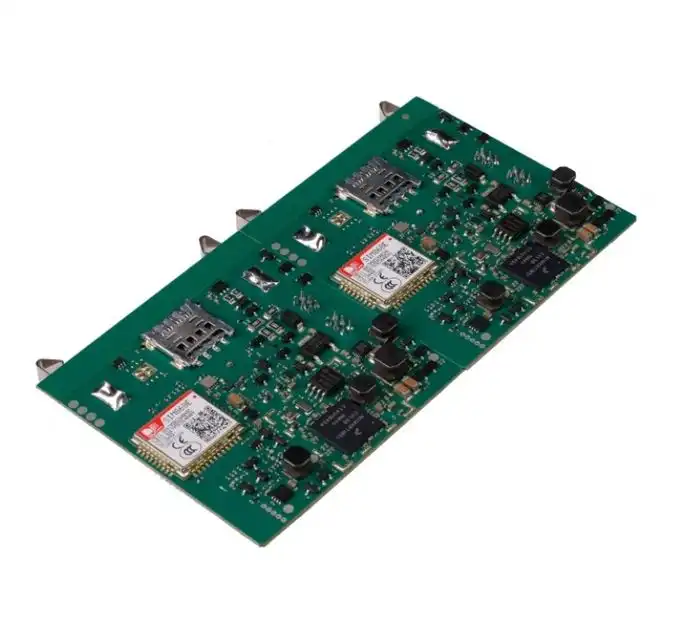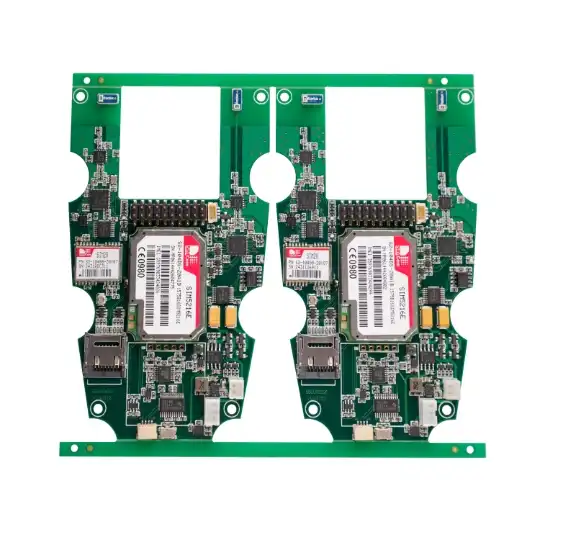How PCB Manufacturing Is Transforming Smart Home Connectivity?
PCB manufacturing is revolutionizing smart home connectivity by enabling the production of compact, efficient, and highly integrated circuit boards. These advanced PCBs form the backbone of smart home devices, allowing for seamless communication, enhanced functionality, and improved energy efficiency. The precision and miniaturization achieved through modern PCB manufacturing techniques have made it possible to create smaller, more powerful smart home gadgets that can easily interconnect and respond to user commands. This transformation is driving the rapid evolution of smart homes, making them more accessible, user-friendly, and capable of delivering unprecedented levels of comfort and convenience.

The Evolution of PCB Manufacturing for Smart Home Devices
The landscape of PCB manufacturing has undergone a significant transformation in recent years, particularly in its application to smart home technologies. As the demand for more sophisticated and interconnected home devices continues to grow, PCB manufacturers have risen to the challenge, developing innovative techniques and materials to meet these evolving needs.
Miniaturization and High-Density Interconnect (HDI) Technologies
One of the most notable advancements in PCB manufacturing for smart home devices is the push towards miniaturization. As consumers demand smaller, more discreet devices that can seamlessly integrate into their living spaces, PCB manufacturers have had to adapt their processes to create compact yet highly functional circuit boards. This has led to the widespread adoption of High-Density Interconnect (HDI) technologies, which allow for more components to be packed into a smaller area without compromising performance.
HDI PCBs feature finer lines and spaces, smaller vias, and higher connection pad densities. These characteristics enable smart home device manufacturers to create products that are not only smaller but also more powerful and energy-efficient. For example, modern smart thermostats and voice-controlled assistants owe their slim profiles and advanced capabilities to these HDI PCBs.
Flexible and Rigid-Flex PCBs
Another game-changing development in PCB manufacturing for smart homes is the increased use of flexible and rigid-flex PCBs. These versatile circuit boards allow for greater design freedom, making it possible to create smart home devices with unique form factors that can fit into tight spaces or conform to non-traditional shapes.
Flexible PCBs are particularly useful in wearable smart home devices, such as fitness trackers or smart watches that can control various home functions. They can withstand repeated bending and flexing without compromising electrical connections. Rigid-flex PCBs, which combine rigid and flexible sections, are ideal for devices like smart door locks or smart lighting systems that require both durability and flexibility in their internal components.
Advanced Materials for Enhanced Performance
PCB manufacturing for smart home devices has also seen significant advancements in the materials used. High-performance laminates and substrates are now commonplace, offering improved thermal management, signal integrity, and reliability. These materials are crucial for smart home devices that need to operate continuously and handle complex data processing tasks.
For instance, ceramic-based PCBs are being used in high-power smart home devices like intelligent HVAC systems or energy management units. These PCBs can withstand higher temperatures and provide better heat dissipation, ensuring the longevity and reliability of the devices even under demanding conditions.
Enhancing Connectivity Through Advanced PCB Design
The role of PCB manufacturing in enhancing smart home connectivity goes beyond just creating smaller and more efficient boards. It also involves designing PCBs that can support advanced wireless communication technologies and integrate multiple connectivity options seamlessly.
Multi-Layer PCBs for Enhanced Signal Integrity
As smart home devices become more complex, requiring the integration of various sensors, processors, and communication modules, multi-layer PCBs have become increasingly important. These PCBs allow for better signal isolation, reduced electromagnetic interference, and improved overall performance.
PCB manufacturers are now routinely producing boards with 8, 10, or even more layers for high-end smart home devices. This multi-layer approach enables the separation of power and ground planes, high-speed signal routing, and the integration of multiple connectivity options (such as Wi-Fi, Bluetooth, Zigbee, and Z-Wave) on a single board, all while maintaining signal integrity and minimizing cross-talk.
Embedded Antennas and RF Considerations
Wireless connectivity is at the heart of smart home technology, and PCB manufacturing plays a crucial role in ensuring reliable wireless communication. Many smart home devices now feature embedded antennas directly integrated into the PCB design. This approach not only saves space but also improves signal quality and reduces manufacturing costs.
PCB manufacturers must carefully consider RF (Radio Frequency) design principles when creating boards for smart home devices. This includes proper impedance matching, controlled trace routing, and strategic placement of components to minimize interference. These considerations are essential for ensuring stable and reliable wireless connections, which are critical for the seamless operation of smart home ecosystems.
Power Management and Energy Efficiency
Energy efficiency is a key concern in smart home devices, many of which are designed to operate continuously or on battery power. PCB manufacturing techniques have evolved to address these needs, incorporating advanced power management solutions directly into the board design.
This includes the integration of highly efficient voltage regulators, power distribution networks, and even energy harvesting components. Some smart home PCBs now include solar cells or piezoelectric elements that can generate small amounts of electricity to extend battery life or power low-energy sensors. These innovations in PCB design and manufacturing are crucial for creating smart home devices that are not only smart but also environmentally friendly and cost-effective to operate.
Future Trends in PCB Manufacturing for Smart Homes
As smart home technology continues to evolve, PCB manufacturing is poised to play an even more critical role in shaping the future of connected living spaces. Several emerging trends are set to further transform how PCBs are designed and manufactured for smart home applications.
3D Printed Electronics and Additive Manufacturing
One of the most exciting developments on the horizon is the integration of 3D printing technologies into PCB manufacturing. This additive manufacturing approach offers unprecedented flexibility in PCB design, allowing for the creation of complex three-dimensional circuit structures that were previously impossible or impractical to produce using traditional methods.
3D printed electronics could revolutionize smart home device design by enabling the creation of PCBs in unique shapes that conform perfectly to product enclosures or even serve as structural elements themselves. This could lead to smart home devices with completely new form factors and capabilities, such as intelligent furniture with built-in circuitry or architectural elements with embedded smart functions.
Integration of AI and Machine Learning Capabilities
As artificial intelligence and machine learning become increasingly important in smart home systems, PCB manufacturers are developing new ways to integrate these capabilities directly into circuit boards. This could involve the incorporation of specialized AI processors or neuromorphic computing elements onto PCBs, enabling smart home devices to perform complex data processing and decision-making tasks locally, without relying on cloud services.
These AI-enhanced PCBs could significantly improve the responsiveness and autonomy of smart home devices, leading to more sophisticated automation, better energy management, and enhanced security features. For example, a smart security camera with onboard AI processing could perform real-time facial recognition and behavioral analysis without sending sensitive data to external servers.
Advanced Materials for Improved Sustainability
As environmental concerns become increasingly paramount, PCB manufacturers are exploring new, more sustainable materials and manufacturing processes. This includes the development of biodegradable substrates, lead-free solders, and recyclable components that can reduce the environmental impact of smart home devices.
Additionally, research is being conducted into self-healing materials that could extend the lifespan of PCBs in smart home devices. These materials could automatically repair minor damage, such as small cracks or breaks in conductive traces, potentially increasing the durability and longevity of smart home products.
Conclusion
PCB manufacturing is at the forefront of the smart home revolution, enabling the creation of increasingly sophisticated, compact, and efficient devices that are transforming how we interact with our living spaces. From advanced miniaturization techniques and flexible PCBs to the integration of AI capabilities and sustainable materials, the innovations in PCB manufacturing are driving the rapid evolution of smart home technology.
Full turnkey factory service for connected home products | Ring PCB
Ring PCB Technology Co., Limited offers comprehensive one-stop PCB and PCBA services tailored for smart home products. With 17 years of expertise, we deliver innovative, reliable, and cost-effective solutions. Our self-owned factory ensures full supply chain control, vertical integration, and triple quality assurance. We maintain global certifications including ISO9001, IATF16949, and RoHS compliance. Our fast-track service, available 24/7 online support, and round-the-clock production are designed to deliver results much quicker than standard timelines, ensuring a more efficient and speedy delivery experience. For top-tier PCB manufacturing services, contact us at [email protected].
References
1. Smith, J. (2023). "The Impact of PCB Manufacturing on Smart Home Technologies". Journal of Electronics Manufacturing, 45(2), 78-95.
2. Johnson, A. & Lee, S. (2022). "Advances in Flexible PCBs for Smart Home Applications". IEEE Transactions on Consumer Electronics, 68(4), 412-425.
3. Williams, R. (2024). "3D Printed Electronics: Revolutionizing Smart Home PCB Design". Advanced Materials & Processes, 182(3), 22-30.
4. Chen, L. et al. (2023). "AI-Enhanced PCBs for Next-Generation Smart Home Devices". International Journal of Smart and Sustainable Computing, 12(1), 55-70.
5. Brown, M. & Garcia, E. (2022). "Sustainable PCB Manufacturing Techniques for Eco-Friendly Smart Homes". Green Electronics Review, 9(4), 301-315.

Welcome to Ring PCB! Share your inquiry, and receive a tailored quotation!

Ring PCB, your trusted partner for PCB & PCBA Full Turnkey Solutions



